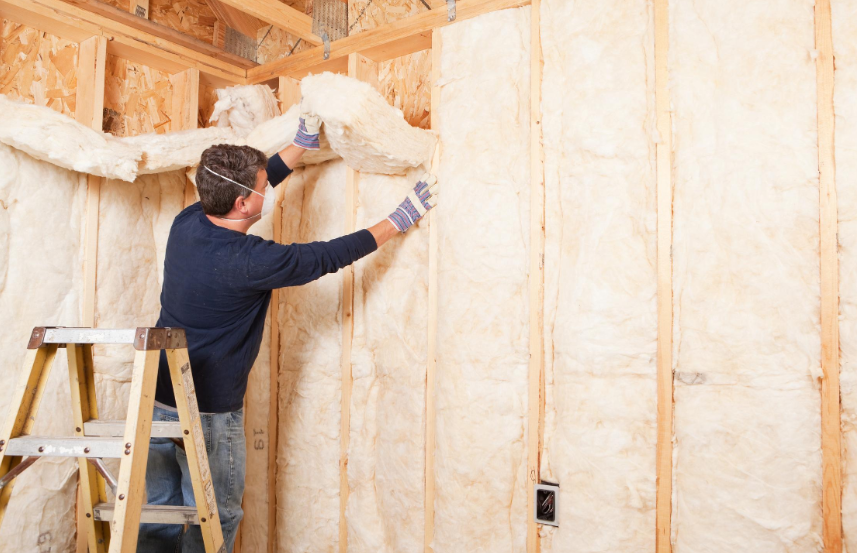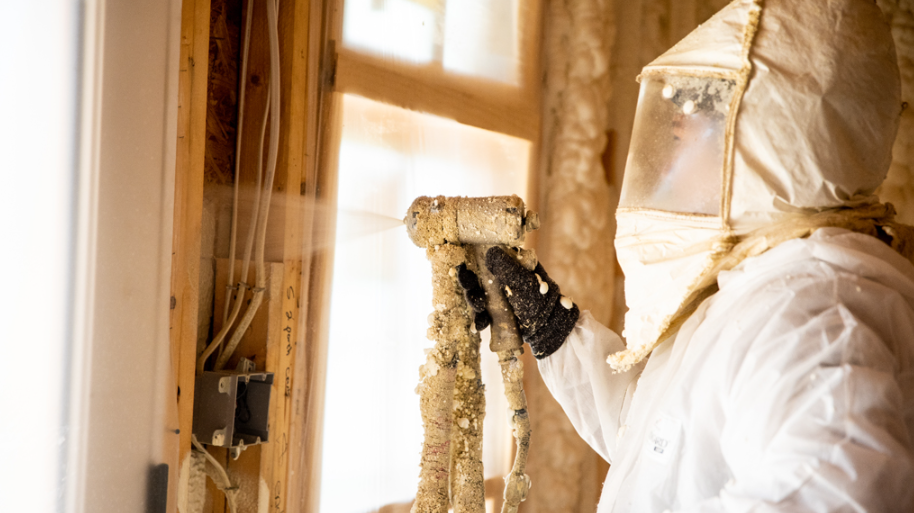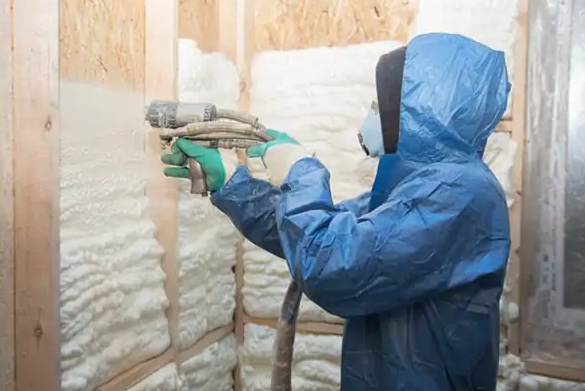By increasing your home’s R-value, you can noticeably improve the energy efficiency, heating and cooling costs, and overall comfort level of your home. Spray foam insulation is one of the most powerful technological solutions that is made and is in high demand these days. While it is often used with new construction, homeowners often ask, Can spray foam insulation be added to existing walls? The good news is…Yes, you can! In this guide, we break down the process of adding spray foam to your home and why you may want to consider the cost of retrofitting your home with spray foam.
What is so special about Spray Foam versus other types of spray insulation?
Before we get to the installation, here’s a really fast way of looking at why spray foam insulation is superior to other traditional insulations like fiberglass or cellulose:
- Strong Air Seal: Spraying foam expands to fill the very narrow cracks and holes that other insulation materials will never get to.
- Moisture Barrier: It seals moisture out to stop mold from appearing.
- High R-Value: The thermal resistance of spray foam is high compared to other forms of insulation, providing as much insulation as possible in the space it is put into.
- Durable: Unlike other insulation choices, spray foam does not settle or break down over time.
If you have the time and money to invest in the best insulation option on the market, spray foam stands at the top of the heap, surely.
Can Spray Foam Be Added Over Existing Walls?
Yes, but it takes the appropriate tools, experience, and planning. Retrofitting spray foam insulation into walls in an existing home is a bit more difficult than new construction, because you need to work around drywall, wiring, and other structural components.
There are two main methods:
- Down from the Inside (Drilling & Injections)
- From the Outside (Siding Removal and Injection)
Each has its pros and cons, and what you decide will depend on the layout of your home and your willingness to do work.
How to Install Spray Foam Insulation in Existing Walls: A Step-by-Step Guide
Analyze Your Current Insulation
Before you start, you need to identify the type of insulation and check the condition. You might also have to take out old insulation, particularly if it’s deteriorating or moldy. Cold spots and gaps in insulation can be detected by a thermal imaging camera or an energy audit.
Choose the Proper Spray Foam Type
There are two primary varieties of spray foam insulation:
- Open-Cell Foam: Not as dense and more flexible; useful for soundproofing and interior walls.
- Closed-Cell Foam: More dense, more durable, and will have a higher R-value, ideal for exterior walls and anti-moisture.
Closed-cell foam is preferred for walls that already exist; it’s more difficult to apply because it’s confined and not as yielding, but it´s also more insulating than open-cell.
Access the Wall Cavity
You’ll need to make small access points to your lead network, depending on how you like to do things:
Inside: Drill holes through wall studs (usually at the top of the wall) and spray foam into the cavity.
Access from Outside: If the house is being re-sided, BOS maintainers can drill holes in the sheathing to inject foam. Especially when a remodel or renovation to the exterior is involved.
Either way, real attention needs to be paid to prevent damaging electrical wiring, plumbing, or joists.
Apply the Spray Foam
Use a professional spray foam kit or insulator to fill each cavity with foam. Ease-in spray foam expands rapidly, and overfilling can ruin drywall or exterior sheeting.
If you are doing it yourself, follow the manufacturer’s instructions carefully and wear appropriate safety gear, including gloves, goggles, and a respirator.
Seal and Finish
You’re going to have to do some additional steps after the foam cures (which generally is just a matter of a few hours).
- Patch the drilled holes.
- Reside in the house or repair the walls.
- If the chair is from 1960 or 2020, sand and paint.
The result? Well-insulated walls that do not disturb the structure of your home.
DIY vs. Professional Installation
Putting up spray foam insulation in existing walls is a technical task. There are DIY kits that you can use to do the job on your own; however, contracting a licensed professional to run the job guarantees:
- Appropriate use without overdistension.
- No cavities left behind. Full coverage in all our cavities.
- Baloney building codes and safety regulations.
- Experts also have experience finding and bypassing the hidden roadblocks behind your walls.
Final Thoughts
Insulated walls are also a simple way to raise your home’s energy rating, providing long-term benefits to homeowners looking to improve energy performance, lower monthly bills, and create a healthier, more comfortable living environment. Although installation requires a bit of pre-planning and accuracy, the return on investment of time and energy will provide years of satisfaction.
If you’re thinking about using spray foam in your home, check with a local insulation expert to determine if it’s right for your walls and for advice on the best type of foam.




